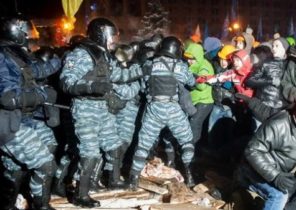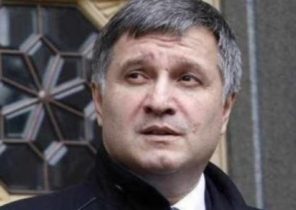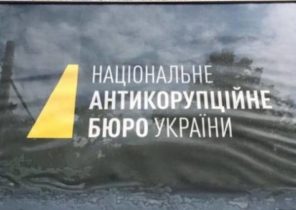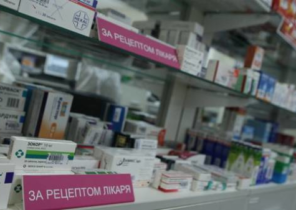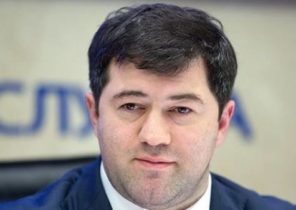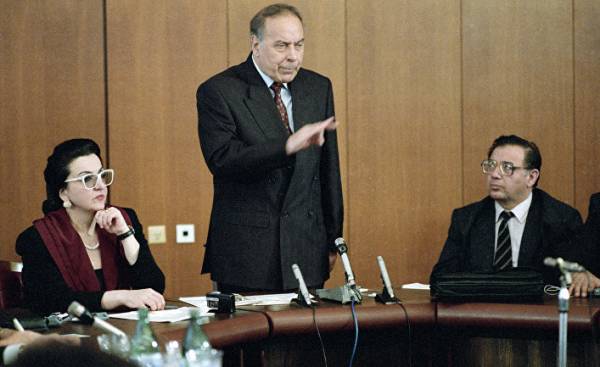
Many people of the older generation and then, nearly thirty years ago, during the collapse of the Soviet system, and today in the Heydar Aliyev see the possibility of upgrading the fading power of the Soviet Union. The departure of Aliyev from the Synod of the Kremlin leadership became the harbinger of the collapse of power, provoked by the covert political struggle and ill-conceived reforms. You need to state the fact that Aliyev Foundation in Russia and the former Soviet Union, many perceive it through the prism of a personal drama, because the disintegration of the country touched many families.
At the same time, Aliyev was able to be the guarantor of the reform of the Union — according to the memoirs of senior Soviet officials, he was the subject of a number of scenarios of modernization and preservation of the Union, which could be carried out, whether the reign of Yuri Andropov longer. This lost opportunity largely devoted to this article.
In addition, there is still little coverage was given to the role of Aliyev in the Soviet foreign policy. Of the other major topics of the article — which features the Heydar Aliyev’s heritage is evident in modern Russia today…
Like any person, Aliyev has left its mark on two levels: mentally, you have captured the image in the memory who worked with him, and material — specific results of your work. The first level is largely subjective and emotionally loaded, it should be clear from the conjuncture of the moment, which gets the narrator. However, both levels are difficult to falsify, as has happened in cases where the events of the past was pushed away from us at too great a distance, when alternated several generations living. This is the source of attention to the figure of our hero: he evaluated not only the experts who study archival documents, but the mass of men now living, who see its fruits in the current system of education, in the health system, in a large number of small and large enterprises on the territory of CIS countries, the largest Soviet Baikal-Amur railroad — this and much more was created with his direct participation or by personally endorsed the initiative.
At the same time we must recognize that there’s a circle of staunch opponents of Aliyev, ignoring his achievements and several tactical considerations are deliberately shading his figure. And they occur at different levels of the social hierarchy, on different orbits of power. His former ideological and political opponents in the Politburo, especially Mikhail Gorbachev and Alexander Yakovlev, their ideological heirs in Russia from the camp of the liberal-democratic opposition, the first wave, try to create about Aliyev negative stereotype, retouch in General, the color of the faceless Soviet bureaucracy the scope of his striking erudition and communication style.
The first opponents and critics of Aliyev’s policy was the result of anti-corruption campaigns of the 1960s-1970s in Azerbaijan organized by Aliyev as the First Secretary of the Central Committee of the Communist party of the Republic. Second, a wider group of wounded opponents, formed from a number of figures have been pushed from power in the 1990-ies, mainly the heirs of the era of anarchy, the national democratic revolution in Azerbaijan.
Finally it is obvious that there are few Aliyev wishers in modern Armenia, but this is a consequence of the famous conflict. Here it is worth noting that Aliyev had always appreciated prominent members of the Armenian elite (take the memories of Armen Dzhigarkhanyan on assistance Aliyev in the receipt by the actor of an apartment in Moscow or the memoirs of contemporaries about good and business relations with Aliyev the First Secretary of the Central Committee of the Armenian SSR, Karen Demirchyan, in spite of the known hardware competition of the two leaders). In General, we must admit that the foes is the flip side of his accomplishments. The strong personality of this magnitude does not have to like everyone.
Aliyev and the fate of the Soviet Union: two eras in one person
You need to take into consideration that now, years later, after the departure of Aliyev from the life, we can distinguish at least several stages of its activities: as head of the Soviet Republic; as the first Vice-Premier of the Soviet government (Deputy Chairman of the Council of Ministers of the USSR), member of the Politburo of the CPSU Central Committee, it is the policy of the largest caliber in the USSR; and then the rapid transit a decade as President of the independent post-Soviet Azerbaijan.
These periods do not coincide on the scale of the task, the level of power that he had, and geographical scope of his duties. They fused together and integrated in the life of one person. Work as head of Soviet Azerbaijan became a stepping stone to the Kremlin “five-year plan” from November 1982 to October 1987. While in Moscow, he constantly kept abreast of the development of the Republic, but it was two more or less independent activities. You can call them eras “Aliyev for Azerbaijan and Aliyev to Russia.” Today, for the mass of ordinary people in Russia and Azerbaijan, he became a symbol of self-made success of the Azerbaijani in the highest power structures of the Soviet Union, and in relation to the post-Soviet period is often called the Azerbaijani Ataturk. However, essentially another, more large-scale historical heritage as one of the leaders of the superpowers, it has left in Moscow.
What milestones stand out in the “Moscow period,” Aliyev
Under his control were more than 12 ministries: oversaw engineering, manufacturing, light industry (only in this Soviet industries were busy up to 3 million people, there were about 3 thousand 700 companies), all types of transport and communications, in his charge were also cultural and educational spheres. Since 1984, the Aliyev headed the Commission on the reform of the Soviet school, in 1986 he held the post of Chairman of the Bureau of the USSR Council of Ministers on social development. He has participated in several non-core to their field projects in related fields. His signature can be found under dozens of important resolutions of the Council of Ministers and the Politburo of the USSR of that period. For example, he headed the Commission on operational issues of the Council of Ministers, it included the Deputy Prime Ministers and several Ministers. With the arrival of Aliyev, going every Monday, the Commission became practically the governing body of the Council of Ministers, solve many pressing issues of economic management by the Soviet Union, was invited to the reports and gave instructions to the leadership of the industries. Sometimes it was called the “second Politburo”. In addition, Aliyev participated in the system vneshneekonomicheskih relations and played a prominent role in the international contacts of the USSR on the Asian and middle Eastern direction.
Stand out his reforms in the social sphere and health care. At the initiative Aliyev created the first integrated diagnostic centers. Thanks to his support of the Soviet surgeons were allowed to conduct the first open heart surgery. Aliyev launched the Center of eye microsurgery by Svyatoslav Fedorov and lobbied for him the creation of a mobile laboratory on a river boat plying on the Volga. In August 1987, published a draft of the CPSU Central Committee “the Main directions of development of health protection and restructuring of health of the USSR for the period till 2000”. According to experts, it was one of the most remarkable documents of the early perestroika, which had a positive impact on the state of medicine, gave the opportunity to update the material and technical base. In many respects the current state of medical technology and material base of medical science in Russia still uses the Aliyev touched.
Fourth in January 1984 was published the draft of the CPSU Central Committee “the Main directions of reform of comprehensive and vocational schools” developed by the Commission under the leadership of General Secretary Konstantin Chernenko. The main developer and supervisor of school reform was said. A few months later, the reform of secondary education entered into force: organization of teacher training and other changes in the system of preschool education were set out in print April 12, 1984, when it was published five decrees of the Central Committee of the CPSU and the USSR Council of Ministers (No. 313-317), which is attached to the resolution №318 on increasing teacher salaries and improving the social conditions of their lives.
Start of elementary school were asked to do a year earlier, with 6 years; the period of study at the secondary school lasted from 10 to 11 years. In schools there is a new subject — fundamentals of computer engineering and programming, bulk purchased personal computers of Soviet production. The reform raised the social prestige of the school and the authority of the teaching profession (increased salary by 30% and introduced a guarantee of social conditions), changed the structure of education management. How strong was reform, I happened to know from my own experience. In 1989, in the 8th grade of secondary school in Moscow we have started to write basic computer programs for games, that was the norm for many schools. Even today, not every school can boast of a similar level of teaching. By 1989, the Aliyev project involved the construction of secondary schools for 7 million pupils and eight vocational schools. It allocated 11 billion rubles (about $ 22 billion at the rate of the Soviet state Bank), of which 3.5 billion on teachers ‘ salaries. The Russian law “On education”, signed by Vladimir Putin in December 2012, is the evolution of that base that was laid with Aliyev in 1980-ies.
Let’s look at the actual statistics generated by reform of the Soviet education and health which involved the said. In 1988, the government spending of public funds, were as follows: per student in secondary schools — 290 rubles, in secondary specialized educational institutions — 914 rubles, and in universities more than 1 thousand 400 rubles. (78% of students received a scholarship). For one child in pre-school were spent 571 ruble, of which 71% was paid by the state. But one patient in the hospital stood out more than 12 $ a day. What was the cost of this money can be judged by the fact that the metro ticket cost 5 cents, and a liter of milk 32 kopecks. The result of these measures, by 1989 the share of population with tertiary education employed in the economy amounted to 20.2 million people (14.5% of the total population).
Disposal of the Soviet legacy is still not finished: work of the enterprise, structure, control, and communications, transport communications, and even the model of managerial decision-making in Russia remain similar to the 1980-ies. For example, the General plan of development of Moscow till 2000 was adopted partly as a result of initiatives Aliyev made speech at the House of architects in Moscow in October 1981. Can recall the project of the center for international trade center on an artificial island in the Baku Bay which was offered Aliyev the Azerbaijani architects in the late 1970-ies, but it never managed to implement, Aliyev was taken to Moscow. Today, this idea of trying to breathe new life. You may recall his methods targeted state support in the sphere of culture. Thus, many elements of management practices are still used today.
It is difficult to convey in one sentence what was the USSR for citizens of the country, its elites and the outside world. Of course, this is the power of contrasts, where extreme poverty in rural areas combined with the latest achievements in science, military and engineering development. In this vast state with huge areas generally not inhabited by humans, had a high degree of urbanization and technological power (by 1990, 40.3% of the Soviet cities was developed after 1945). But many parts of Russia, Central Asia and the Caucasus is equipped with a sufficient level of different infrastructure thanks to the spurt in the 1970-1980-ies.
Heydar Aliyev had this work most relevant. During these years, was explored, equipped and put into operation the main power fuel and energy complex in the future independent of Russia (a huge role in this process belongs to the Azerbaijani oilmen), was also built unified energy and transportation system, which later became the connecting mechanism for the CIS.
All of the major social, economic, administrative and military-scientific system was provided by the scientific support class. As one of the leaders of the “Andropov” modernization Aliyev participated in the development of the resolution “On measures for accelerating scientific-technical progress in the national economy” dated 18 August 1983, No. 814. The document stated that a significant amount of completed research works are not widely and fast application in the economy. Unnecessarily stretch the development time and the development of new types of equipment and technology. Needed to further improve the system of certification of industrial products. However, this decision created the possibility of Soviet industry in the short term to ensure the production of machines, equipment, devices and materials according to their technical and economic indicators of the respondents to the world level.
In other words, the Soviet Union, headed by such leaders as Heydar Aliyev was able to go the Chinese path of gradual Communist transformation, but, unfortunately, this chance was not used.
To be continued.

